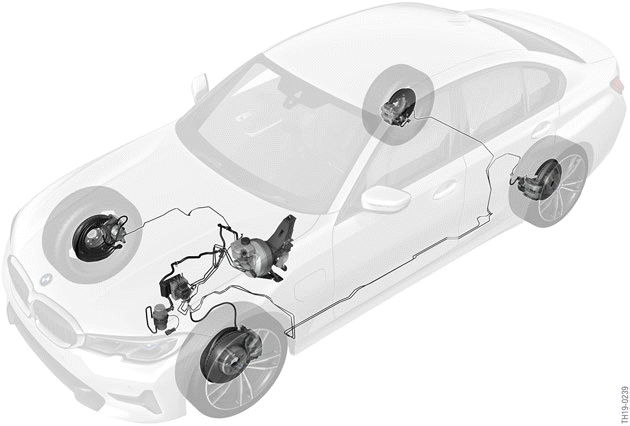BMW 3: Hydraulic braking

G20 PHEV, hydraulic braking
The brake booster is operated via the driver's foot operation, and the brake actuation is determined by means of the brake pedal angle sensor.
Depending on the brake pedal angle sensor signal, the valves in the Dynamic Stability Control (DSC) are switched so that the brake fluid volume is filled into the pressure storage chambers of the DSC.
This causes an artificial extension of the brake pedal free travel. This free travel extension is used for additional recuperative brake energy regeneration. As of a certain brake pedal travel, the valves are closed and the hydraulic intervention of the driver on the wheel brake is restored.
As brake recovery is reduced, the volume from the pressure accumulator is pumped into the wheel brakes with the help of the return pump.
The vehicle is thus not decelerated with the friction brake on the rear axle at various operating points, but via energy recovery of the electrical machine.
The recuperation level is reduced or is not permitted in the following operating conditions:
- On detection of adversely affected driving stability, the energy recovery level is reduced.
- If emergency braking is detected, the driver's braking request is realized purely hydraulically in order to ensure faster implementation of the hydraulic interventions at the individual wheels as required.
- If no energy recovery is available (e.g. high-voltage battery unit fully charged), the driver's braking request is realized as described. In this case, the energy recovery level is zero and the return pump generates the complete hydraulic brake pressure required to achieve vehicle deceleration.

